
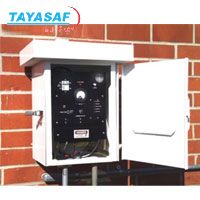
阴极保护脉冲整流器
| 订货号: | MM-80867-00 |
| 产地: | 美国 |
| 品牌: | |
| 开发编号: | N |
| 市场价: | ¥ |
| *此产品根据配置不同价格不同 |
| *此价格为参考价格,具体价格以订单合同为准 |
- 我在现场:
- 产品视频:

- 产品描述
- 技术参数
- 技术文档
- 相关产品
- 明细价格
- 购买流程
产品描述:

Pulse Rectifier Description

The Model 2015 Pulse Rectifier (Pulser) is an air-cooled DC power supply that is designed to work as any conventional rectifier with the added benefit of increased current distribution and reduced cathodic interference on adjacent buried structures. The major components consist of the pulse module, power transformer and control/monitoring panel.
Pulse Module: The pulse power module is the main component of the Pulser. The module consists of the power conversion circuitry that converts the AC to high voltage DC output pulses. It also contains the control, monitoring and communication circuitry. All solid-state power components are mounted on a massive aluminum heat sink. The main circuit board and associated components are also mounted to the heat sink and are protected by a steel housing. The output of the rectifier is electronically controlled to maintain a “constant current” during operation.
Main Power Transformer: The main power transformer is a single phase, toroidal isolation transformer. Toroidal transformers offer improved power efficiency, are lighter weight and are more compact than conventional laminated core power transformers.
Control/Monitoring Panel: This main panel controls and monitors the operational status of the system and contains the following components:
An output control dial (10-turn potentiometer) provides the means for adjusting the pulse output current.
A single, continuous reading ammeter displays system current output. Panel-mounted jacks are provided for cross checking meter accuracy.
The pulse train interrupt switch is available to interrupt the pulse output without switching off the main rectifier power.
Primary and secondary circuit breakers.
System status indicating lights.
Recessed potentiometers are included to adjust pulse width and frequency to improve performance on a site-specific basis.
Enclosures: A number of different enclosure types are available including an industry standard rectifier type cabinet as well as other commercially available decorative cabinets. With a compact physical dimension of 12” x 12” x 16”, the 2015 Pulser can even be located in existing, customer supplied cabinets. The standard rectifier type enclosure is manufactured from 11-gauge cold rolled steel with a thermally fused, multistage coating, white in color.
AC Input Section: The standard available AC input configuration is 115/230 volt, single phase. Customer specified AC inputs are also available as a special order.
Removable Safety Panel: This removable panel shields the high voltage pulse output lugs, the AC secondary interconnect, and access to interrupter connection lugs. These lugs allow for the use of a portable interrupter. It is important to note that a portable interrupter only interrupts a low voltage, low current signal rather than the pulse output. This allows the use of virtually all types of commercially available, portable current interrupters.
Serviceability Features
On the standard rectifier type enclosure, front and side opening doors are provided for easy installation and servicing.
The entire rectifier assembly is built on a slide-out chassis allowing easy removal from the cabinet for service.
The major electronic components are enclosed in a single module housing.
A pulse interrupt circuit is provided which will function with any portable current interrupter.
The entire rectifier assembly is built on a slide-out chassis allowing easy removal from the cabinet for service.
The major electronic components are enclosed in a single module housing.
A pulse interrupt circuit is provided which will function with any portable current interrupter.
Temperature monitoring devices are built into the system. These devices monitor critical electronic component operating temperatures. If the operating temperature should exceed a maximum range, the pulse module output will be interrupted until the temperature reduces to a safe operating level. At that time, the system will automatically restart and return to previous operating parameters.
For structures that require in excess of 15 amps of protective current, additional rectifiers can be added to the same structure and operated in parallel to provide the required current.
For multiple structures at a common location, additional rectifiers may be installed on a common anode ground bed. Each rectifier will provide an independently controlled, constant current to each structure.
For structures that require in excess of 15 amps of protective current, additional rectifiers can be added to the same structure and operated in parallel to provide the required current.
For multiple structures at a common location, additional rectifiers may be installed on a common anode ground bed. Each rectifier will provide an independently controlled, constant current to each structure.
Model 2015 "Pulser" pulse module
Theory of Operation
The Pulser produces very short duration, very high voltage, direct current electrical pulses for cathodically protecting buried metallic structures, such as pipelines and well casings, from external corrosion.
Pipelines, well casings, and other steel structures buried in soil, corrode. Cathodic Protection has been used to mitigate corrosion for many years. Sufficient direct electrical current (DC) is caused to flow from the soil to the surface of the structure. Typically, the negative lead from a DC rectifier is connected to the structure to be protected, and the positive lead to an anode bed. The ground bed usually consists of one or more rods, called anodes, fabricated from expendable materials such as graphite or silicon steel. The anodes are buried in deep wells, or shallow holes or trenches, in the vicinity of the structure to be protected. The process is called Cathodic Protection, because protective cathodic reactions are caused to take place on the surface of the structure being protected.
The DC current mitigates corrosion by electrochemically reducing any corrosive oxygen molecules and hydrogen ions that may be adsorbed on the surface of the structure in contact with the soil. As additional molecules and ions diffuse from the soil and become adsorbed onto the steel surface, they are also reduced by the continuously flowing direct current. There are certain drawbacks to conventional cathodic protection, however. Current flows in the ground continuously in a relatively large three-dimensional envelope. If there are other foreign metallic structures buried in the soil within the current envelope, damage in terms of metal loss will very likely occur to the foreign structures. Also, the "throw", or distance down the pipeline or well casing, that can be protected, is limited by the magnitude of the current reaching the more distant corroding surfaces.
The corrosive oxygen molecules and hydrogen ions, adsorbed on the surface of the buried structure, are electrochemically reduced within microseconds after the application of cathodic current. Before the corrosion reactions can begin again, additional molecules and ions must diffuse to the surface of the structure from the surrounding soil and become adsorbed. The destructive diffusion and adsorption processes are orders of magnitude slower than the protective reduction process, particularly when the ions are not being driven by a continuously applied cathodic protection voltage.
With Pulse Cathodic Protection the corrosive molecules and ions are electrochemically reduced with very short duration but very high current pulses. Since throw is a function of current magnitude, the very high pulsed currents result in greatly improved throw down the length of the structure. Because of the natural electrical characteristics of the structure/anode system, the greatly improved high current throw is further enhanced by the inductive and capacitive redistribution of that current.
Also, the very short duration pulses are separated by relatively long "off" intervals. The pulse voltage is applied for less than 20% of the total time. Thus, the continuous current envelope and the resulting interference on foreign structures is greatly reduced.
技术参数:

泰亚赛福作为众多知名品牌的合作伙伴,优惠的价格+完善的售后服务体系向您提供产品。font>

泰亚赛福作为众多知名品牌的合作伙伴,优惠的价格+完善的售后服务体系向您提供产品。font>
技术文档:

泰亚赛福作为众多知名品牌的合作伙伴,优惠的价格+完善的售后服务体系向您提供产品。font>
- 在线浏览:
- 文档下载:

泰亚赛福作为众多知名品牌的合作伙伴,优惠的价格+完善的售后服务体系向您提供产品。font>
相关产品:

泰亚赛福作为众多知名品牌的合作伙伴,优惠的价格+完善的售后服务体系向您提供产品。font>
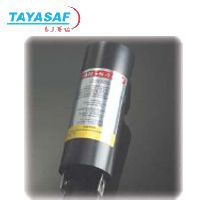 30A电流隔离器订货号:MM-80863-00
30A电流隔离器订货号:MM-80863-00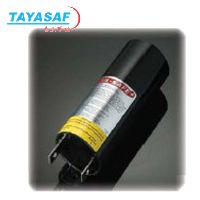 50/60A电流隔离器订货号:MM-80864-00
50/60A电流隔离器订货号:MM-80864-00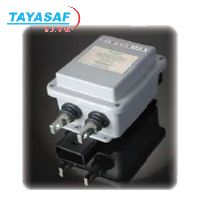 100A电流隔离器订货号:MM-80865-00
100A电流隔离器订货号:MM-80865-00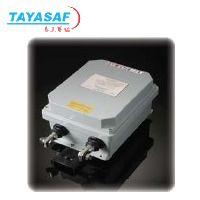 200A电流隔离器订货号:MM-80866-00
200A电流隔离器订货号:MM-80866-00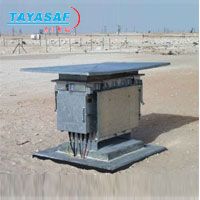 阴极保护脉冲整流器3015订货号:MM-80868-00
阴极保护脉冲整流器3015订货号:MM-80868-00

泰亚赛福作为众多知名品牌的合作伙伴,优惠的价格+完善的售后服务体系向您提供产品。font>
明细价格:

泰亚赛福作为众多知名品牌的合作伙伴,优惠的价格+完善的售后服务体系向您提供产品。font>
| 定货号 | 产品名称 | 规格配置 / 简介 | 市场价/(会员价) |
|---|---|---|---|
| MM-80867-00 | 阴极保护脉冲整流器 | /() |

泰亚赛福作为众多知名品牌的合作伙伴,优惠的价格+完善的售后服务体系向您提供产品。font>
购买流程:

泰亚赛福作为众多知名品牌的合作伙伴,优惠的价格+完善的售后服务体系向您提供产品。font>
①购买产品:点击“生成订单”→填写产品数量、联系方式并提交→会员顾问订单处理→合同签订。
②咨询产品:请联系会员顾问或致电会员客服电话。
③如果您还不是我们的会员,请先注册。
④最小起订数量:1
注意:本产品唯一个人现金委托收款人,如汇入其它个人账户本公司不承担任何责任
维护担当:
上线时间:
投诉电话:13801126385 13911302309
②咨询产品:请联系会员顾问或致电会员客服电话。
③如果您还不是我们的会员,请先注册。
④最小起订数量:1
注意:本产品唯一个人现金委托收款人,如汇入其它个人账户本公司不承担任何责任
维护担当:
上线时间:
投诉电话:13801126385 13911302309
联系方式
电话北京:400-000-1836 分机 或拨0转总机
上海:021-54248686 分机 或拨0转总机
上海:021-54248686 分机 或拨0转总机
传真北京:010-84852750/84854139
上海:021-64418200
上海:021-64418200

泰亚赛福作为众多知名品牌的合作伙伴,优惠的价格+完善的售后服务体系向您提供产品。font>
您最近浏览的商品












 美国MI
美国MI



